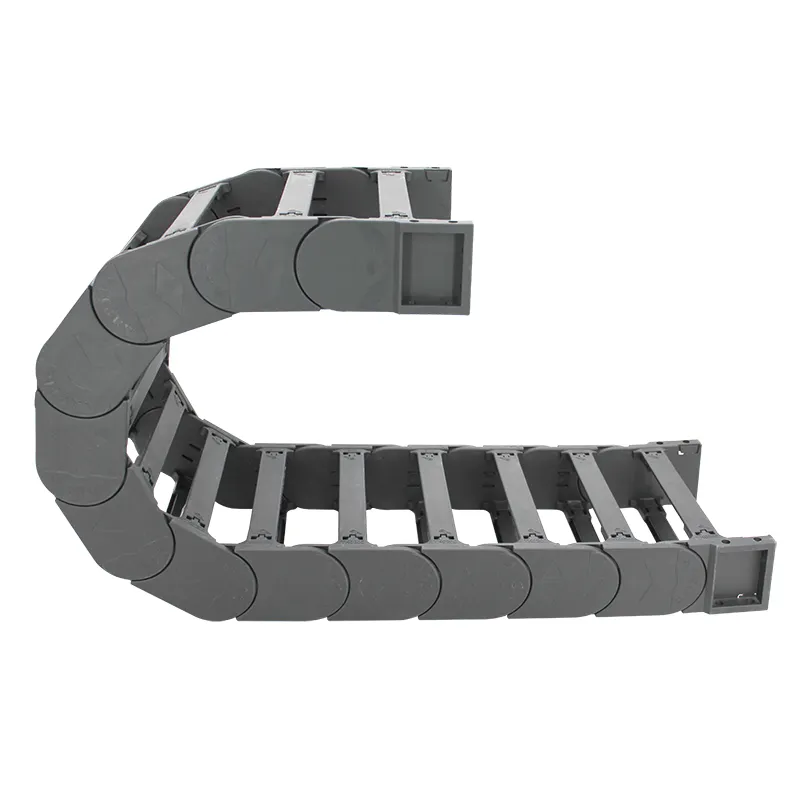Exploring the Benefits and Applications of Semi-Enclosed Cable Chain Systems in Industrial Settings
Understanding Semi-Enclosed Cable Chains A Comprehensive Overview
The rapid evolution of industrial automation has necessitated the development of more efficient, durable, and flexible solutions for cable management. Among these innovations, semi-enclosed cable chains have emerged as a crucial component in various applications, serving to protect and organize cables while ensuring smooth operation in dynamic environments.
What is a Semi-Enclosed Cable Chain?
A semi-enclosed cable chain is a cable management system designed to house and protect flexible cables and hoses while allowing them to move freely. Unlike fully enclosed chains, which completely encase the cables, semi-enclosed chains feature an open design that facilitates easier access and maintenance. This design is particularly advantageous in environments where cables need to flex or move frequently, such as in robotic arms, CNC machines, and other automated equipment.
Key Features and Benefits
1. Enhanced Mobility The primary function of a semi-enclosed cable chain is to allow for the smooth and unrestricted movement of cables as machinery operates. This is critical in applications where components might extend or retract, changing the length and angle of the cable route.
2. Protection from Environmental Factors Semi-enclosed cable chains provide a degree of protection against dust, debris, and other environmental hazards. This is particularly important in industrial settings where exposure to contaminants can lead to cable wear and failure.
3. Ease of Installation and Maintenance The semi-open design of these chains permits easier access to the cables inside, making it simpler for technicians to inspect, replace, or reorganize the cabling system as required. This accessibility can significantly reduce downtime during maintenance.
semi enclosed cable chain

4. Versatility These cable chains are available in various materials and sizes, catering to specific application requirements. Users can choose chains that are resistant to oils, chemicals, or extreme temperatures, making them suitable for diverse industries from automotive manufacturing to food processing.
5. Reduced Strain on Cables By providing a controlled path for the cables to move within, semi-enclosed cable chains help to minimize bending and twisting. This plays a significant role in prolonging the lifespan of the cables, reducing the risk of damage due to strain or fatigue.
Applications of Semi-Enclosed Cable Chains
Semi-enclosed cable chains find widespread use across numerous industries. In manufacturing plants, they are often employed alongside robotics to manage power, signal, and air supply lines, allowing for efficient and reliable operation. In the automotive sector, these chains are integral to assembly lines, supporting various machinery and tooling while protecting electrical and hydraulic lines.
Moreover, in the entertainment industry, such as theaters or concert venues, semi-enclosed cable chains help manage lighting and sound equipment. They allow for the smooth operation of rigging systems, ensuring that cables are neatly organized while still being able to move as needed.
Conclusion
In conclusion, semi-enclosed cable chains represent a critical advancement in cable management solutions. Their unique blend of protection, mobility, and ease of maintenance makes them indispensable in various applications across multiple industries. As technology continues to advance and automation becomes ever more prevalent, the importance of effective cable management systems like semi-enclosed cable chains will only increase, paving the way for more efficient and reliable industrial operations. Their ability to adapt and cater to diverse operational needs underscores their relevance and essentiality in modern engineering and manufacturing domains.








